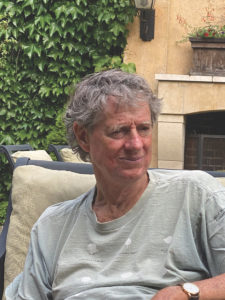
“Fake news” has become President Trump’s favorite counterpunch when challenged by reporters doing their jobs. He uses that phrase when he is caught with nowhere to hide. Any piece of news critical of Trump is dismissed as “fake.”
The charge itself is fake, and we have heard it so often that many have stopped hearing it at all. The president assumes that the press is monolithic and operates with a herd political agenda of our own.
It is fine to hate the fourth estate, but do it for the right reasons. The news business is just that, a business. But it happens to be the only business protected by the U.S. Constitution. Congress shall make no law “abridging the freedom of speech, or of the press.”
When President Reagan deregulated broadcasting, including jettisoning the Fairness Doctrine, that business was unleashed, free to do anything. Government had been the guardian of the public airwaves. Now those airwaves might as well have been owned by corporate America. Station owners celebrated; government finally was off their backs. Station licenses are a license to print money. Now the question for those stations was, how low can you go in pursuit of profits?
Before 1987, the Federal Communications Commission had strictly regulated broadcasting. The Fairness Doctrine had mandated that television stations examine “controversial issues of public importance.” No more. The common denominator plummeted.
In the years since, the concentration of power in the news media has increased exponentially. When I started in network news in the early 1970s, individuals and companies could own at most five stations. Now there is no limit. A single entity could not own a television station and a newspaper in the same city. Now anything goes. Corporate forces run the show.
In 1979, I became a producer on the CBS Evening News With Walter Cronkite. Serious news was our holy grail. “What do viewers need to know?” Cronkite routinely demanded of us. When Dan Rather took over the anchor chair, the question became “What do viewers want to hear?” Ratings were king. What viewers need and what they want are very different.
The newspaper business has evolved in the same direction as television. USA Today came along in 1982 and was regarded by critics as television turned into print. Independent newspapers were devoured by chains that cared more about selling papers than what was printed in them. Public responsibility was dying on the vine.
The Barnstable Patriot is Cape Cod’s oldest newspaper, founded in 1830. It was family-owned for 175 years, until 2005, when it was sold to the Ottaway chain. After a series of corporate buyouts, including by Rupert Murdoch’s News Corp., the Patriot ended up in GateHouse Media’s clutches, and the paper, like so many others, slid into oblivion.
The corporate owners of print and broadcast news media demand high profits today, and they are not picky about how that is accomplished. “To make money, we’ve had to train audiences to consume news in a certain way,” explains journalist Matt Taibbi in his book Hate, Inc. “We need you anxious, pre-pissed, addicted to conflict.”
Selling newspapers is as old as printing them, but we have become an underinformed society because news has become divorced from reality. News is oxygen. But substance does not always sell. Too many newspapers have become little more than infotainment.
This failure of the newspaper business has paved the way for Trump’s self-serving, bogus claims of made-up news, used as a political weapon. They are a diversion that pollutes the air democracy must breathe.
Walter Lippmann warned America about snake oil salesmen. “There can be no liberty for a community which lacks the information by which to detect lies,” he wrote in The Atlantic in 1919.
Yet America’s liar-in-chief seems to control the media. He makes political speeches in the guise of briefing reporters on the coronavirus, and every word finds its way onto television. Trump is delivering what he accuses everyone else of. Fake news.
Richard M. Cohen is a three-time Emmy-winning former senior producer for CBS News and CNN. His most recent book is Chasing Hope.



